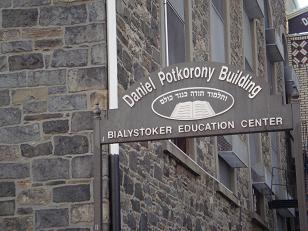The Melting Process: Education
From The Peopling of NYC
One key aspect to Jewish assimilation in the New World was the Educational Alliance. It was sponsored by many German Jews, merely due to arrogance. That is, they attempted to Americanize the newcomers. Jewish children were offered vocational training. Later, Yiddish-speaking Jews became more accepted. Attorney and Philanthropist Louis Marshall once wrote that he recognized the misleading notions of the German Jews. He learned Yiddish to understand/communicate with the society. Soon, the Educational Alliance lifted the language ban so that Jews could become Americans “in terms of their own Yiddish culture” (Sorin 71).
Education as Key to Upward Mobility
Jews arrived in the US with a literacy rate of approximately 74 percent compared to 34 percent for Italians, for example. For Jewish immigrants, school was an important arena where hopes could be fulfilled and where children, who had internalized the drive to achieve, could prove themselves. Jewish students were attending high school longer than other groups and were more likely to graduate.
Education in New York
In NYC, 80 percent of Regents Scholarship winners in 1921 were Jewish. 80 percent of Jewish students in New York completed high school, compared to less than 35 percent of the general population. In 1937, in NYC Jews were 25 percent of the population, yet they made up 65 percent of lawyers and judges, 64 percent of dentists, and 55 percent of doctors. In NY the Jewish rate for completing college was almost three times greater than the rate for non-Jews.
Sentiments towards Education
One Lower East Side mother wrote in the Daily Forward:
“I am a widow…[with] a store and barely get along…I employ a salesman. If were to withdraw my [15-year-old] son from high school, I could dispense with the salesman, but my motherly love and duty..do not permit me…so what shall I do when the struggle for existence is so acute?… I cannot definitely decide to take him out of school, for he has inclinations to study and goes to school dancing. I lay great hopes in my child.” (Sorin 161)
